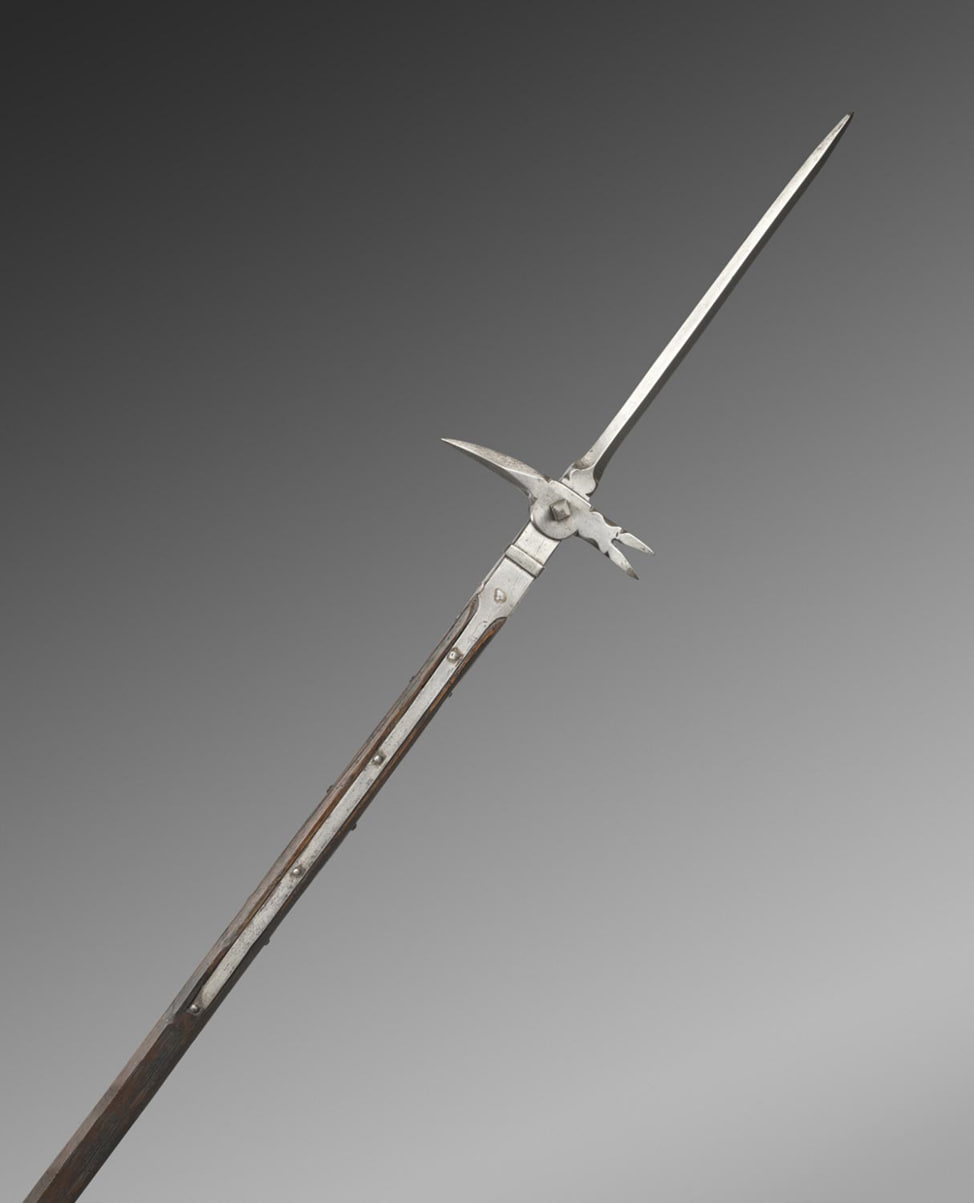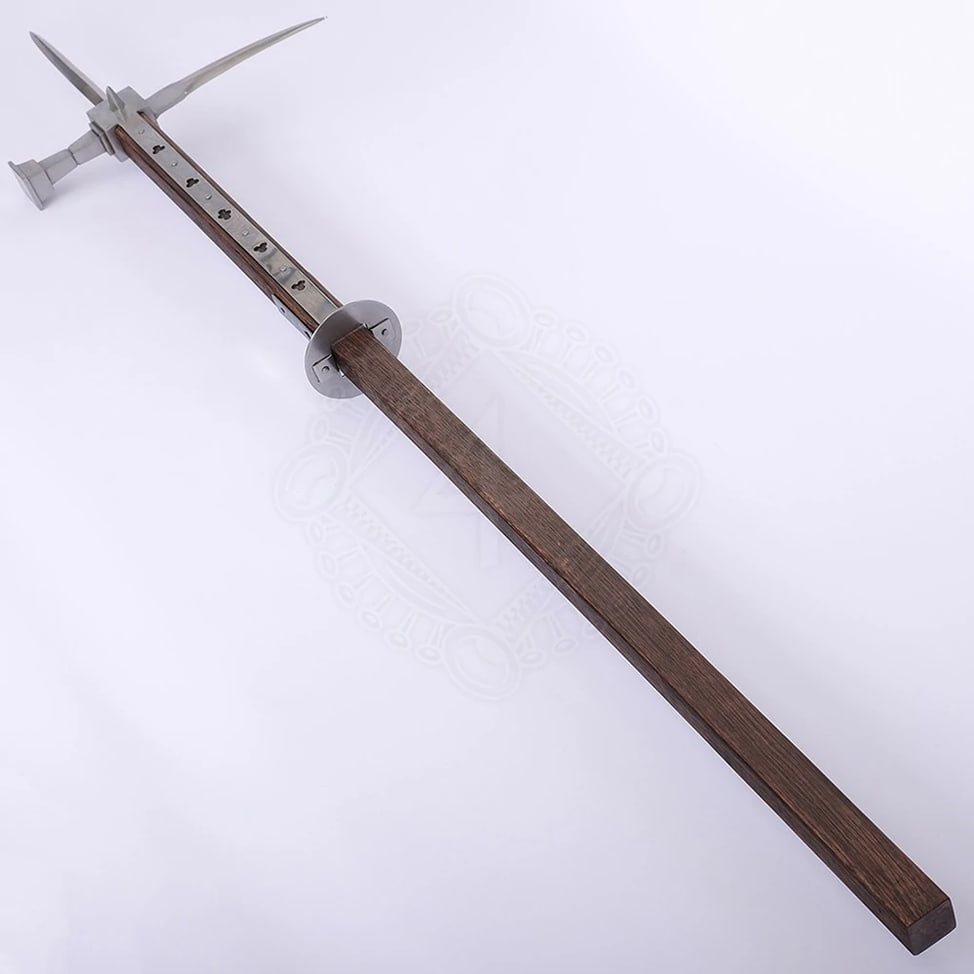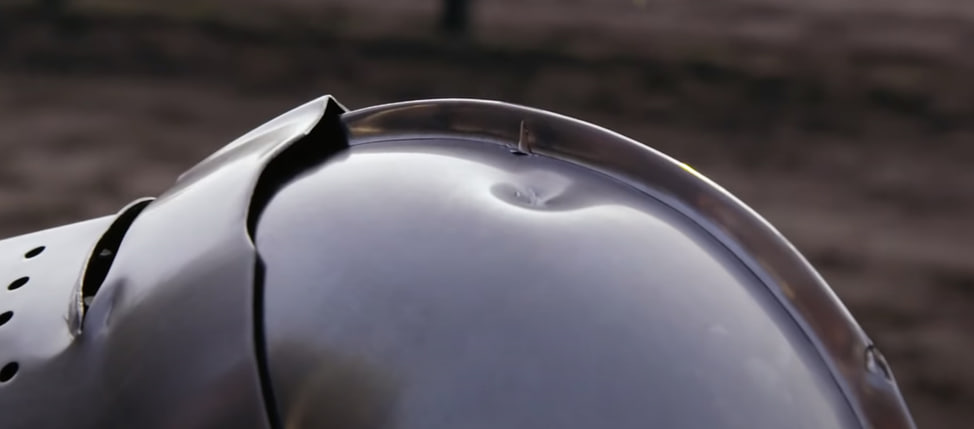
No products in the cart.
In the 14th – 15th centuries, the Swiss cantons, in the struggle against the reduction of their own autonomy within the Holy Roman Empire, begin an open confrontation. The cantons were able to organize infantry sufficiently disciplined by medieval standards, armed with pikes, halberds and long axes. Using the terrain where the knight cavalry has lost maneuverability, the Swiss infantry inflicts a number of major defeats to the enemy during several conflicts. Such an example is the Battle of Morgarten (1315)
As a result, the newly formed Swiss Confederation receives broader autonomy within the Holy Roman Empire. In addition, major infantry victories over knights attracted the attention of most feudal countries. And the Swiss decided to provide their services as mercenaries, increasing not only their personal income, but also the welfare of the cantons.
 with the landsknechts of Francis I during the Battle of Marignano (1515)..jpg)
The battle of Swiss mercenaries (left) with the landsknechts of Francis I during the Battle of Marignano (1515).
After the Battle of St. Jakob an der Birs in 1444, where the French won a hard victory over the Swiss, King Charles VII of France, seeing the high fighting qualities of the enemy, decided to conclude an agreement with the cantons to hire mercenaries. Swiss soldiers entered the zenith of glory in the European armies.
Naturally, Swiss mercenaries needed weapons with which to resist not only infantry, but also knight cavalry in armor. Such weapons were halberds, pikes and Lucerne hammers. We will talk about the last Lucerne hammer.
Lucerne hammer: typology and appearance
This type of shaft weapon originated at the end of the 15th century on the territory of modern Switzerland and gradually becomes widespread in other regions of Western Europe. It can be said that the Lucerne hammer was a weapon of the Renaissance, since its use falls precisely on the period of the late 15th century and the beginning of the 17th century. The hammer got its name from the canton of Lucerne, where many copies of this weapon were found.
The Lucerne hammer was a hybrid two-handed shaft weapon combining a long spike, a hammer and horseman's pick. The hammer has forks, which allows it to better pierce armor. The tip is mounted on a long shaft 150 -200 cm. Part of the shaft has splints connected to the tip, which reduced the likelihood of breakage. And even in the event of a breakdown, there was already a shortened part of the hammer with a handle that could be used in battle, although not so effectively.

Lucerne hammer.
And it's worth solving the typology problem right away. Sometimes the Lucerne hammer is attributed to another type of striking shaft weapon Bec de corbin. Bec de corbin despite the sometimes similar split hammer head (flat heads are common for this type), the spike has a shorter length and therefore these two types of weapons are different.

Bec de corbin
Quite often on the web you can find publications where the Lucerne hammer or Bec de corbin are referred to as poleaxes. This statement is fundamentally incorrect, since the poleaxe consists of two roots “pole” and “axe". That is, if there is a hammer on the tip instead of an axe, it is no longer a poleaxe.
Use in battle
The Lucerne Hammer was a two-handed weapon that could only be used on foot. These shaft weapons could be resisted by an infantryman or a horseman. In the event of a collision with a knight in armor, this hammer could knock the rider out of the saddle with a sweeping blow on a powerful lever.
The serrated hammer can be used to pierce the plate armor of an infantryman or a rider, however, there was a risk that the tip would get stuck and the warrior would remain unarmed and vulnerable due to the possible lack of additional weapons. However, even if the blow did not penetrate the armor, the kinetic force concentrated on the head will be enough to cause injury. For example, such a blow to the helmet would cause concussions, which is enough to knock a knight out of a combat-ready state. A blow to the helmet could also tear off the visor, which was attached to rivets and, accordingly, the knight was no longer so invulnerable.

The consequences of a hammer blow on the helmet.
The horseman's pick on the spine can probably be used to break through the armor. However, the armor for this had to be not of high quality without good tempering. However, the armor (mainly the breastplate and helmet) was tested for strength before being handed over to the customer using various weapons, such as a halberd, a two-handed sword, and in a later era, the Revival of arquebus shooting. Therefore, it was difficult to break through the breastplate with a horseman's pick, except that the blows could work into the weakly protected neck and armpits, which were covered with chain mail and a gambeson cloth. It was impossible to protect these places with full-fledged plates, otherwise there would be great damage to the mobility of a warrior in armor. He could have been used against infantrymen in chain mail and a gambeson, here horseman's pick coped perfectly.
A long spike was used for stabbing blows, which are effective against a warrior in an gambeson and chain mail. In the case of a knight, blows could be inflicted on a horse and in weakly protected places of plate armor.
In general, the Lucerne hammer was quite a successful multifunctional weapon, with its drawbacks. It fell out of use in the European armies of the early 17th century for the same reason as the poleaxe. In other words, the increase in the influence of firearms, the displacement of plate armor by light brigandines and a number of other factors led to low efficiency on a more modern battlefield.